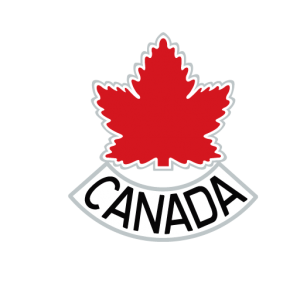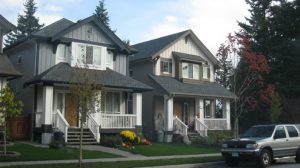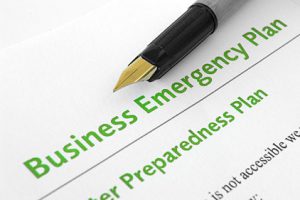Fire Department
Demo Fire Department
Emergency Preparedness
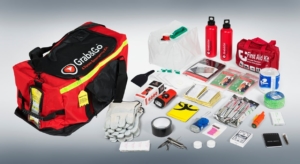
The City Emergency Program (CEP) works to make sure our city is as prepared as possible for emergencies such as earthquakes, floods, severe storms and major fires. This public safety program is managed by the Fire Service and operates under City’s Emergency Bylaw.
Learn how to create emergency plans, and how to get involved in emergency preparedness efforts by joining organizations like the Emergency Social Services Program, City Search & Rescue or the Amateur Radio Society.
Contact the City Emergency Program at emergencyprogram@city.ca.
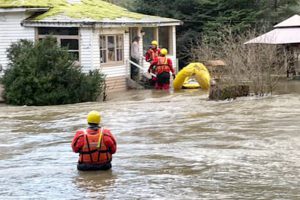 Flooding can be caused by several events. Heavy rains alone or mixed with spring’s melting snow can create excessive runoff on rivers and lakes. Ice jams can also cause flooding when water upstream is blocked by ice downstream.
On the coast, flooding can occur when seasonally high tides are amplified by a severe storm or tsunami.
View the Flood Zone Map to see the areas of potential flood. Get flood preparedness and response information for residences and businesses.
Important Notice Regarding Insurance
Flood damage is not often covered by your homeowner’s insurance policy. Consult your insurance broker regarding your coverage and take proactive steps in moving your precious items out of a flood area for safeguarding.
Flooding can be caused by several events. Heavy rains alone or mixed with spring’s melting snow can create excessive runoff on rivers and lakes. Ice jams can also cause flooding when water upstream is blocked by ice downstream.
On the coast, flooding can occur when seasonally high tides are amplified by a severe storm or tsunami.
View the Flood Zone Map to see the areas of potential flood. Get flood preparedness and response information for residences and businesses.
Important Notice Regarding Insurance
Flood damage is not often covered by your homeowner’s insurance policy. Consult your insurance broker regarding your coverage and take proactive steps in moving your precious items out of a flood area for safeguarding.
Immediate Threat of Flooding
Electrical service
- Shut off power to premises
- If the main switch is in an area that is already wet, stand on a dry board and use a dry stick to turn switch off.
- Do not attempt to turn off power if the room is already flooded
Electrical Appliances
- Disconnect all electrical appliances, and if possible, move them to a higher level. Thermally insulated appliances such as freezers, refrigerators and ranges should be given priority
- Any appliances that cannot be moved should have motors, pumps, fans, etc. removed to higher levels
Gas or oil furnaces and appliances
- Oil or water tanks will float if not full. Fill if possible, then plug vent holes. If unable to fill, weight down with sandbags or wedge against a solid object
Plumbing fixtures and water supplies
- Turn off water supply
- Plug all basement sewage connections, e.g. toilet, sinks, showers, etc. with a plug or other device. The plug should be held in place with a weight or wood brace to the joist above.
Other precautions
- Pesticides, weed killers, fertilizers and other articles that may cause pollution should be moved to higher levels.
- To relieve overloading the sewer system, disconnect any downspouts draining to them.
- Move or remove all furniture and personal effects that could be damaged by flooding or that may float and cause damage.
Sandbagging
- If constructing a sandbag dike, build it on high ground close to your home or building. This ensures fewer sandbags will be needed and the dike will be less exposed to nearby streams.
- Dig a trench one bag in depth and two bags wide as a foundation for the dike structure.
- To be effective, a dike must be three times as wide at its base as it is high.
When Flooding Occurs
View the Fraser River Flood Plain Preparedness Phases established by City's emergency response teams.
If rising waters become a threat to your safety, obey all officials who are involved in rescue or flood control operations, including those directing traffic, as water can be deeper than it appears.
Outdoors
- Climb to high ground and stay there.
- Avoid walking through any floodwaters.
In a vehicle
- Take extra care when driving. Familiar roads will appear drastically different when covered by floodwaters.
- Be on the lookout for damaged bridges, slides and washouts, and especially downed power lines.
- If you come to a flooded area, choose an alternate route.
- If your car stalls, abandon it immediately and climb to higher ground.
In your home
- Be sure you know where your emergency supply kit is.
- Follow your family emergency plan.
- Ensure each member of the family has warm clothing and waterproof footwear and outerwear.
- If you need to use a different meeting place than agreed on in your emergency plan because of flooding, make sure every member of the household knows where the new location is. Provide younger children with a note sealed in plastic stating the family’s destination.
- Turn off power and unplug all appliances.
After a flood
Flooding Assistance
- Find helpful resources in the Disaster Recovery Kit.
- As an individual, family or small business, you may be able to receive Provincial Disaster Financial Assistance (DFA) if insurance is not available.
- You may be able to receive assistance through the Red Cross through their Financial Assistance Program, which raises donations.
 Wildfires don't just happen in the wilderness! They can also be a risk within urban developments, particularly if the developments are near forested areas or heavy vegetation. Brush or grass fires can easily spread to nearby homes, causing an urban wildfire.
Urban wildfires can start small and initially go unnoticed but can spread quickly. Help keep your home and family safe by following a few simple prevention tips.
Wildfires don't just happen in the wilderness! They can also be a risk within urban developments, particularly if the developments are near forested areas or heavy vegetation. Brush or grass fires can easily spread to nearby homes, causing an urban wildfire.
Urban wildfires can start small and initially go unnoticed but can spread quickly. Help keep your home and family safe by following a few simple prevention tips.
Preparedness Tips for Your Family
- Make sure every floor and all sleeping areas have working smoke alarms.
- Set up emergency numbers in your phone.
- Create a 72-hour emergency preparedness kit ready to go with at least*
- 4 litres of water per person, per day for drinking and cleaning
- Non-refrigerated food and a manual can opener
- Crank or battery powered flashlight/batteries
- Crank or battery powered radio
- Blankets or sleeping bags
- Toiletries
- First aid kit
Prevention Tips for Your Home
- Keep your roof, siding and deck in good repair, free from holes, gaps and cracks.
- Use non-combustible building materials.
- Use multi-paned and tempered windows, including those on doors and the garage.
- Use metal or aluminum gutters and ensure they’re kept clear of needles and leaves.
- Consider a closed porch, balcony or deck, which provide additional protection.
- Keep combustible material on an open deck to a minimum.
Prevention Tips for Your Yard
- Create a buffer zone around your home that is free from combustibles that support burning, such as shrubs, patio furniture and overhanging branches.
- If possible, extend a minimum of 1.5 metre non-combustible surface around the perimeter of your home.
- Keep firewood piles, construction materials, and propane tanks as far away from the home as possible.
- Regularly clean up accumulations of fallen branches, dry grass, tree needles and leaves.
- Mow your lawn regularly to keep it at a height of 6 inches or less.
- Plant low density, fire-resistant plants.
If a Wildfire is Approaching your Home
- Listen to local radio and watch City of City social media channels for up-to-date information, including emergency instructions and road closures.
- Pack your car with your valuables and park it facing forward out of the driveway with windows closed.
- Close all home windows and doors, and move combustible materials, such as curtains and furniture, away from windows.
- Cover vents, windows and other openings with duct tape.
- Turn off propane or natural gas.
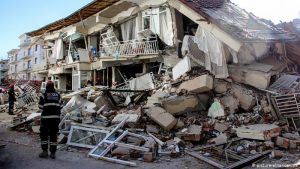 In an earthquake, sound usually precedes any ground movement by a split second. This is followed by shaking that can last from several seconds to several minutes. Over the following hours or days, aftershocks may occur.
In an earthquake, sound usually precedes any ground movement by a split second. This is followed by shaking that can last from several seconds to several minutes. Over the following hours or days, aftershocks may occur.
What to do to prepare for an earthquake
- Check that you have a battery-powered radio in working order, with spare batteries, to listen to instructions from your local station.
- Put together a household emergency supply kit that includes food, water and medical supplies and a Grab and Go kit in case you have to evacuate.
- Create a family emergency plan and practice it.
- Have an out-of-province telephone contact who your family can call and check in if you get separated.
- Check your home and minimize any hazards
What to do during an earthquake
If you're in a building:- Remain calm.
- Stay inside, away from windows or anything that could fall on you.
- Get under a heavy desk or table and hang on, or sit in a doorway or corner.
- If you can't get under something strong, then flatten yourself against an interior wall and protect your head and neck.
- Don't attempt to leave the building unless you feel the building is unsafe.
- Wait for the shaking to stop, and be aware there may be aftershocks. Stay in your position for at least 60 seconds after the shaking stops.
- Get into an open area away from power lines, structures and trees.
- Stop in a clear area.
- Stay in your car with your seatbelt fastened until the shaking stops.
- Stay in your seat until the bus or train has stopped.
- Protect your head with whatever is available, such as a book or pillow.
- Follow the instructions of the driver.
After the shaking stops
- Check yourself and those around you for injuries, apply first aid if needed. Don't attempt to move seriously injured people.
- Evacuate the building if you're inside. Use the stairs. Don't attempt to use the elevators.
- Check the building for damage, gas leaks and fires.
- Hang up all phones that may have been shaken off the hook.
Other emergencies
Earthquakes can lead to other emergencies. For more information about emergency preparedness, see our tips on flood preparedness.
Storms and extreme weather events in B.C. are becoming more frequent and more severe. Such events can cause flooding, power outages, property damage and safety concerns.
You can stay safe and minimize storm-related damage or disruption by being prepared, knowing what to do during a storm, who to contact for information, and how to report a problem or emergency.
Before a Storm
- Be ready for storms, power outages and emergencies with a 72-hour Personal Emergency Supply Kit that includes food, blankets, water, a flashlight, a battery-powered radio and necessary medication.
- Take 20 minutes to develop a Household Emergency Preparedness Plan in case the storm triggers a disaster, such as a major flood.
- Inspect trees on your property for signs of weakness or damage.
- Store or tie down outdoor furniture or loose objects.
- Help keep catch basins free of debris to avoid excess water and potential flooding.
- Have a safe alternative heat source during a power outage. Never use propane or gas-powered barbecues, heaters or portable generators indoors.
- Keep important contact information handy.
During a Storm
- Stay indoors and off the roads.
- If the power goes out, turn off all lights (except one in a main area), unplug appliances, and turn down thermostat to reduce the initial demand when the power is restored. Keep doors, windows and drapes closed, and close off extra rooms so heat is concentrated in one area. If the power is out for a long time and you have no way to safely keep warm, leave rather than risk getting hypothermia.
- If you’re outside during a storm, keep away from power lines, fences, trees and hilltops.
- If you’re caught in your vehicle, pull off the highway, stop away from trees or power lines, stay in your vehicle and put your hazard lights on. Run the engine and heater about 10 minutes each hour to keep warm. While the engine is running, open the window slightly and keep the exhaust pipe free of snow.
Important Contacts
Power Outages
If you have internet service and a mobile device, check BC Hydro's Power Outage Map for power outage information. If your power outage isn’t listed, call 1-800-BCHYDRO (1-800-224-9376) or *HYDRO (*49376) on your mobile or report online. Never call 911 for power outage information.
Downed Power Lines
Report fallen power lines by calling 911 immediately. Stay at least 10 metres (33 feet – about the length of a school bus) away from downed power lines at all times.
Downed Trees
Fallen trees or branches causing immediate danger to people, or imminent tree hazards that could endanger people and require road closure or access control, are treated as a 911 emergency.
To report a non-emergency downed tree on public property during work hours (8:30am–4:30pm), call 604-123-4567 or email parks@City.ca. After-hours, call 604-123-4567. You can also report such trees online using our Report a Problem service.
To deal with a non-emergency downed tree on private property, follow the appropriate tree removal steps.
Winter Snow & Ice Control Operations
Use the Report a Problem tool or call 604-123-4567 to report a snow or ice problem. Include exact location details. Learn about snow and ice control and priority routes in City.
City General Contacts
Contact the City of City by department or call the main switchboard at 604-123-4567.
To report emergency and non-emergency operational issues and safety hazards (flooding, water main breaks, pump station failures, dangerous pot holes, etc.) to the City of City, call 604-123-1111
How it works
NEPP facilitators conduct meetings with citizen groups and then act as consultants as those groups develop their response plans. Personal preparedness is the first step of NEPP. The second step focuses on setting up your neighbourhood team, including the following response units:- Shelter and Care Giving
- Communications and Transportation
- Light Urban Search and Rescue
- Utilities and Fire Suppression
- Disaster First Aid
- Damage Assessment
Free Presentations
Free Neighbourhood Emergency Preparedness Program Presentations are offered to any neighbourhood, school, or interested group in City. To arrange a presentation, email Cityemergencyprogram@City.ca or call 604-123-4567.Household Emergency Plan
Develop an emergency plan to help you and your family know what to do after an emergency or if you need to evacuate your home or neighbourhood. It will take you about 20 minutes to prepare your plan. When creating your plan:- Assign specific tasks to family member like gathering pets, collecting the supplies, providing first aid, etc.
- List the most important items to be taken with you and only those that can be hand carried.
- Mark the date you prepared your plan and update it as changes occur.
- Keep your plan in a place that’s easy to find and to remember (e.g. with your emergency kit) as well as other locations such as your car, work and on your computer.
- Make sure everyone in the household knows about the plan. Practice it with everyone at least once a year.
Escape Routes
Make sure you and everyone in your family/household knows all the escape routes:- Draw a floor plan of your home showing main and alternate exits from each room, as well as locations of extinguishers, water and gas valves, electrical box, emergency supplies, and an outdoor meeting place.
- If you live in an apartment, plan to use the stairs rather than the elevators. If you would be unable to use the stairs, notify City Fire Service ahead of time so that the information is put on file.
- Make note of escape route options from your neighbourhood.
Meeting Places
Identify a safe place near the home (e.g. at a neighbour’s) and away from the home (e.g. at a relative’s home, local school or church) where everyone should meet if they have to leave during an emergency. The meeting place near your home should be on the same side of the street as your home, so you don’t need to cross the street into traffic or in front of emergency vehicles.Emergency Contact Information
Create an emergency contact list with all of the following identified. Leave a copy close to your telephone and in your emergency kits at home, work and vehicle. Make sure everyone has a copy in their wallet or programmed into their cell phone. Local emergency numbers:- Fire, police, ambulance: 911
- Poison control
- Name
- Phone numbers: home, work, cell
- Email address
- Home address
- Employer name, address and phone numbers
- School name, address and phone numbers
- Daycare or child care provider name, address and phone numbers
- Designated person for pickup of children from school or daycare – name, address and phone numbers
Important Documents and Records
When disaster strikes, you may need to access important contact numbers and household documents. Keep copies in two secure locations, such as a safety deposit box, fireproof safe or watertight bags in the freezer. You could also exchange documents with others you trust or upload to a secure location on the internet (e.g. secure cloud storage). Gather copies of information such as:- House insurance policies, photos/receipts to assist with claims, and contact information
- Life insurance or other policies and contact information
- Deeds, wills, tax records and birth certificates
- Health records and personal medical information such as prescriptions (medication and eye), allergies and special needs
- Social insurance and passport numbers
- Bank/financial account numbers
- Vehicle make, plate number and identification number
- Utility companies: gas, hydro, internet, telephone
- Lawyer, doctor, dentist and other medical service provider contact information
- Landlord contact information,
- Security alarm company contact information
Evacuation Procedures
Your house may not be habitable or safe after a disaster, or authorities may ask you to leave if they believe you are in danger. If you are required to evacuate:- Collect your Grab and Go kit, essential medications, copies of prescriptions and important documents, and a cell phone.
- Ensure each member of the household has warm clothing and waterproof footwear and outerwear.
- Make sure each member has ID, especially children. Nametags on their clothing, wallet cards or wrist bracelets are useful in case you get separated.
- Turn off and unplug all appliances, and shut off water and electricity if officials tell you to. Leave natural gas service on unless officials tell you to turn it off. If you go turn off the gas, the gas company has to reconnect it, which may take weeks after a major emergency.
- Lock your doors when you leave.
Reception Centres
City has 6 six primary and 6 secondary designated evacuation/reception centres to support the residents in the event of a disaster. The number of centers that open depends on the location and the nature of the situation and any necessary evacuation measures. During an evacuation, City officials will inform the public of the location of the nearest reception centre. Information will also be broadcasted on CBC AM 690 or other local radio/TV stations, and posted on our site and social media accounts. Learn more about Emergency Social Services.- Are better able to survive disasters and protect their employees and operations.
- Play a significant role in their community’s recovery.
- Are more likely to meet safety and workplace regulations, including the provincial Workers Compensation Act and Occupational Health and Safety (OHS) Regulations and the Canada Labour Code
Developing your Emergency Plan
Consider these items when developing your emergency plan.Data and Documentation
- Check your insurance policy to ensure important business assets are covered in the event of a disaster.
- Make sure your emergency contact information is posted in your office.
- Back up critical business data and retain an off-site copy.
Site Safety
- Review checklists for building safety.
- Keep first aid kits well stocked and consider offering basic first aid training to employees
- Maintain fire extinguishers to keep in working order, and consider obtaining fire extinguisher training for all staff through City Fire Service.
- Regularly check smoke detector batteries.
- Keep a properly stocked emergency kit in the office.
Advance Planning
- Develop and train employees on a business emergency preparedness plan, including:
- Business risk analysis
- Crisis communications plan
- Evacuation and shelter-in-place plans
- Aiding employees or customers with special needs
- Discuss emergency plans with suppliers, service providers and other business network partners
- Consider contingency plans in case of utility disruption.
- Encourage employees to develop household emergency plans.
Employee Safety
To ensure the safety of your employees, ensure you offer training and supplies for employees, familiarize all staff with your plan and make sure you account for any special needs of employees.Building Safety
Ensure your building's safety by considering the different types of emergencies and the potential risks associated with your building. Following these steps will help you plan to keep your building and staff as safe as possible:- If you manage building utilities, designate individuals to be responsible for shutting them off in an emergency if needed.
- Identify contact information for any inspection and repair professionals you may need after an emergency.
- Make sure building contents are properly secured in case of an earthquake.
- Identify alternate work locations in the event your building becomes severely damaged or inaccessible.
- Discuss with a professional options for addressing any structural safety issues regarding earthquakes, floods, etc.
- Keep property well maintained to ensure proper storm drainage, lessen risk of trees falling on structures/power lines, etc.
- Review insurance policies to ensure building structure and contents are adequately covered.
Evacuation Alerts or Orders
Some emergencies may make staying put dangerous. In such cases, it may be safer for you to evacuate the immediate area and go to family or friends or an emergency reception centre. The authority to order an evacuation can rest with different levels of government (local, provincial or federal). Various methods will be used to advise residents and businesses in the event that emergency messaging is needed, including an “evacuation alert” or an “evacuation order.” Tools include going door-to-door (if applicable), in a patrol car or fire vehicle using the PA system, alerting the media (radio, TV, internet), and social media (Twitter, Facebook and website). Every emergency is different and people may be asked to evacuate to a specific location or shelter-in-place.More to be added soon!
